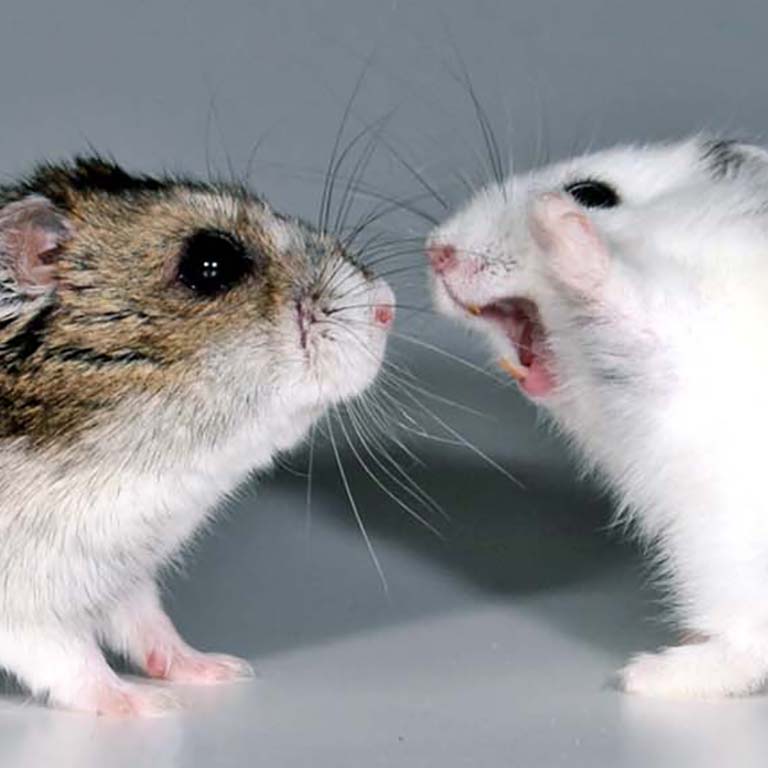While studying seasonal aggression in Siberian hamsters, Kathleen “Kat” Munley discovered something remarkable: her data suggested that the same behavior in males and females was caused by different neuroendocrine responses.
Her paper, entitled “Sex-specific endocrine regulation of seasonal aggression in Siberian hamsters,” was recently published in the prestigious journal Proceedings of the Royal Society B: Biological Sciences. This study was part of her dissertation research, which she carried out in the laboratory of Greg Demas, a professor in the College of Arts and Sciences Department of Biology at Indiana University Bloomington.
Hormones regulate many of our physiological processes and social behaviors, as well as those of other vertebrates, via the neuroendocrine system. In the wild, many animals exhibit seasonal changes in hormones and behaviors, adaptations that are important in enabling them to maximize their chances of reproductive success when environmental conditions are favorable. For most seasonally breeding animals, this means that they are more aggressive during the breeding season, when circulating levels of gonadal steroids—steroid hormones that are produced by the reproductive tissues, such as testosterone and estrogens—are high and there is intense competition for access to territories and mates.
Some seasonal breeders, however, are equally or more aggressive during the non-breeding season, despite undergoing gonadal regression, in which the reproductive tissues become inactive and gonadal steroid production is low. Siberian hamsters are one such species, making them an excellent model for studying how extragonadal neuroendocrine mechanisms (i.e., those independent of gonadal steroids) could regulate aggression year-round.
“Siberian hamsters are also quite unusual in that both males and females show higher levels of territorial aggression during the non-breeding season,” Munley said. “This phenomenon is particularly uncommon in females, who typically only display aggressive behavior in a maternal context, such as when they are defending their pups from potential predators.”


 The College of Arts
The College of Arts